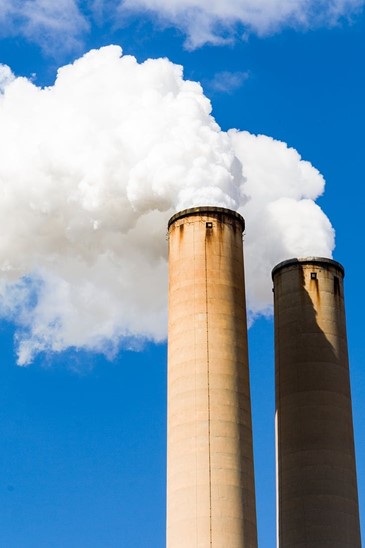Dear Big Chem-EZ, I often see large clouds billowing out of chemical plants, what is the “smoke” and what is its environmental impact?

Steam being vented into the atmosphere; www.hippopx.com/en/
New Orleans, like much of the Gulf of Mexico coastal region, has several nearby chemical plants working night and day. These facilities vent certain process by-products into the atmosphere, creating “clouds.” Visible gases vented from the plants appear in two forms, the release of process steam and the flaring of unwanted gasses.
Steam and water are an integral part of most chemical plants and refineries. Because water is readily available and cheap, it is often used to cool down various processes. Once the water has absorbed the process heat, it then must be cooled so it can be recycled. This is done in cooling towers, where the hot water is put in contact with the outside atmosphere. While the bulk of the heat is transferred into the air, some of the heat causes the water to evaporate. The systems’ open designs then allows this water vapor to escape as steam, which creates those large pillars of white or gray “smoke” you often see coming from these sites.(1) Steam is also released by scrubbing processes to capture pollutants. While contaminated droplets are collected and disposed of, the excess steam and cleaned gas is let out into the atmosphere.(2) Although steam can add heat to the atmosphere, it is a relatively small amount with little impact. The steam itself does not significantly contribute to environmental impact, as the steam simply enters the environment’s water cycle, and does not stay in the atmosphere for very long.(1)
On the other hand, flaring is the process by which plants burn off excess hydro-carbon gases. While this process produces a large flame, Environmental Protection Agency regulations require that the flare operates at high efficiencies under complete combustion. Complete combustion means that all the waste gas is burned. This process does not produce any soot, and as a result produces no visible smoke. However, when the system experiences an upset that prevents complete combustion, the flare will produce black smoke created from the soot byproduct.(3) Although properly operated flares do not produce “smoke”, flaring is one of the largest contributors to global greenhouse gas emissions. However, the chemicals in the undesirable gas are more harmful to the environment than the products of their combustion. This means that the act of flaring is still more desirable than releasing the waste gas directly into the atmosphere.(4) For more information on flaring see the Big Chem-EZ article “Is flaring safe for the Gulf Coast?”.
Thus, while chemical plants and refineries do emit pollutants into the atmosphere, it is usually the unseen products that are the real danger to climate change. Most of what we can visibly see coming out of these facilities is just steam used for cooling and cleaning the processes.
– Big Chem-EZ
References:
This piece was edited by Evan Price as part of Professor Kelley Crawford’s Digital Civic Engagement course at Tulane University.
 NOLAbeings Multimedia artist Claire Bangser created NOLAbeings as a portrait-based story project that marries...
NOLAbeings Multimedia artist Claire Bangser created NOLAbeings as a portrait-based story project that marries...  Voodoo in New Orleans: Reviving history: New Orleans fortune telling This article takes a deep dive into the history of Voodoo in New Orleans, its hybridization with Catholicism, and its present-day place in the city's culture. The author visits fortune-tellers in the French Quarter, using their guidance as a tool for introspection rather than a deterministic predictor of the future. Through her experiences in New Orleans, the author feels a mystical connection to both the past and the future.
Voodoo in New Orleans: Reviving history: New Orleans fortune telling This article takes a deep dive into the history of Voodoo in New Orleans, its hybridization with Catholicism, and its present-day place in the city's culture. The author visits fortune-tellers in the French Quarter, using their guidance as a tool for introspection rather than a deterministic predictor of the future. Through her experiences in New Orleans, the author feels a mystical connection to both the past and the future. 